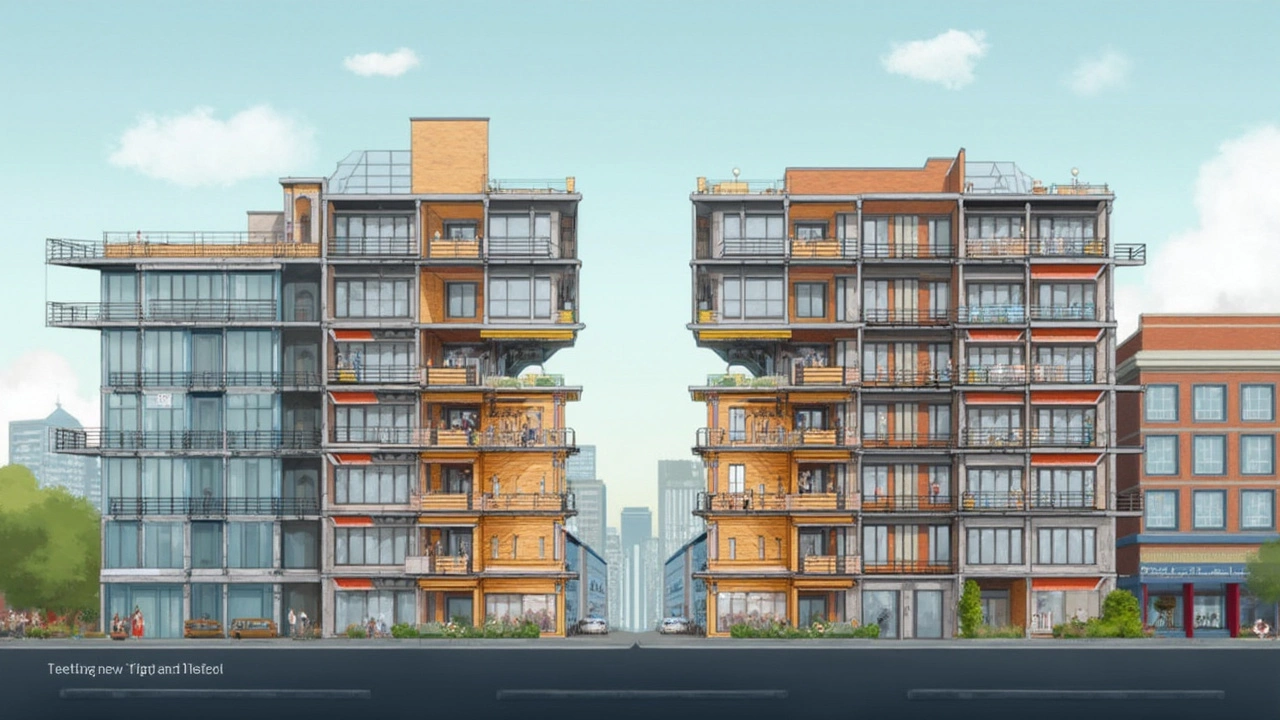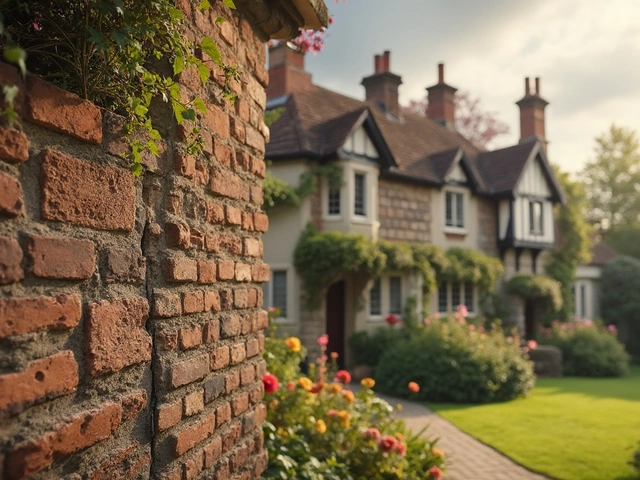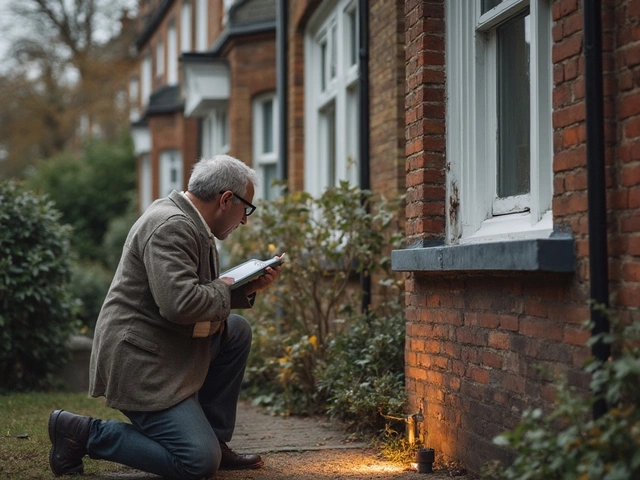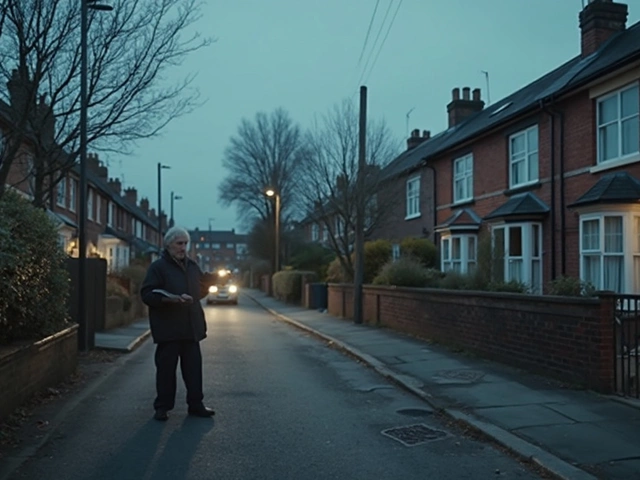You walk by modern glass towers and cozy brick offices every day, but ever wonder what keeps them standing—safely? It's not just concrete and steel—there's a whole world of rules behind how they're built. Turns out, whether a building is classified as type A or type B construction isn't a random label. These categories are the backbone of safety, cost, and even how a building gets insured. It's the kind of knowledge that can mean the difference between stubbornly pursuing a costly upgrade or cleverly choosing the right materials from the start. If you care about fire safety, protecting people, or even making smarter investments, understanding type A and type B construction will probably save you a headache—or a fortune—at some point.
Why Construction Types Exist: The Real-World Stakes
Type A and type B construction might sound a bit like describing battery sizes, but they're anything but small potatoes. They grew out of a basic need: how do you keep tall or crowded buildings safe when disasters strike, especially fires? Without strict rules, we'd have a patchwork of risky structures, and big fires could sweep through cities like a bad memory. In the United States, the International Building Code (IBC), which most states follow, spells this out pretty clearly. So, what’s at stake? The way your building is classified affects its total cost, allowable height, the number of floors, and what it's actually made of—all translating to lives saved and insurance costs shaved down.
Hard fact: When New York City started enforcing serious building codes after repeated fires in the late 1800s, fire deaths plummeted. It's no accident—how we build literally saves lives. As cities grew, so did the stakes. A five-story apartment in Houston will have different safety bones than a high-rise in Chicago, and that's by design.
Maybe you’re a business owner, a future landlord, or just fascinated by architecture. Either way, understanding these construction types lets you see the city in a totally new light. Picture two identical hotels, but one is type A, the other type B: their inside guts—and their insurance premiums—are very different.
Type A Construction: The Heavy-Duty Safety Choice
If you ever listen to the way building inspectors talk, type A always sounds like the overachiever of the construction world. It's officially called "protected construction," and you'll find it in places where fire resistance is the law, not just a good idea. Think hospitals, skyscrapers, airports—basically, places where lots of people gather and where evacuation, if needed, could be more challenging. The rules for type A aren't soft: the main structural elements—columns, beams, floors, roofs—must have added layers or special materials (usually gypsum board, spray-on coatings, or thicker concrete) that give them a baseline fire rating: often two to three hours.
This isn't just a suggestion; it’s codified. For example, IBC Table 601 mandates a 3-hour fire rating for the main supports in a type IA building. That means if a serious fire breaks out, the building should keep standing—giving everyone time to escape and firefighters a shot at containing the blaze before total structural failure. These requirements ramp up for bigger or more important buildings.
Take data centers. With millions of dollars of equipment inside, a fire isn’t just a risk to life—it could wipe out cloud storage for banks or hospitals. That’s why you’ll often find them built to type A standards, sometimes going beyond code just for insurance perks or peace of mind. You might pay higher upfront costs for all that extra protection and labor, but ask anyone who’s watched firefighters battle a skyscraper blaze: the investment can pay off big time in both property and lives saved.
One cool fact: after the World Trade Center attacks, a lot of cities revisited their rules around protected construction. Thicker fireproofing became standard in many high-rise codes. Safety demands evolve as buildings get taller and our understanding of risks grows.
Where you’ll find type A in daily life:
- High-rise apartment or office towers (often over 75 feet tall)
- Hospitals and emergency centers
- Large entertainment complexes
- Critical government buildings
The trade-off: higher initial construction costs, but often cheaper insurance, stronger resale value, and the obvious peace of mind for both the owners and everyone inside.
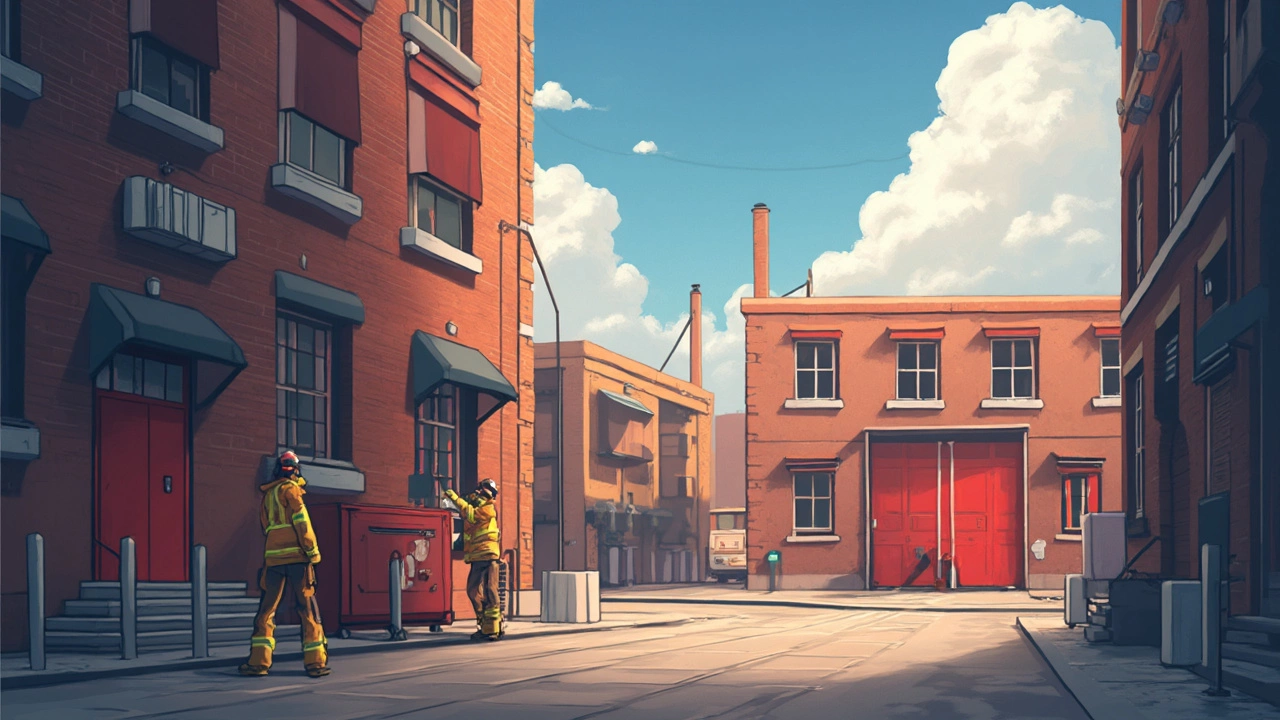
Type B Construction: The Lighter, Cost-Efficient Approach
Type B isn’t a flimsy cousin; it’s just the efficient one. Dubbed "unprotected construction," it’s usually for buildings that are smaller or lower risk for fires. The structural frame here doesn’t get as much fireproofing—sometimes none at all, depending on use and rules. You’ll see a lot of type B in suburban office parks, small-scale retail strips, and mid-rise apartments.
The logic behind type B is practical: if a building isn’t as tall, crowded, or critical, it makes sense to spend less on fireproofing. That can save thousands—or even millions—during construction. The flipside? Code limits are stricter for how tall or big the building can be, and insurance might cost more due to a higher risk of fire damage and faster collapse.
Let’s get super clear about the rules:
- IBC Table 601: For type IIB, the fire-resistance rating required for structural frames, floors, and roofs is 0 hours—that means no required fireproofing.
- For some type II-A or V-B buildings (different from I or II), requirements can range from zero to one-hour ratings for individual elements.
But don’t confuse “unprotected” with “unsafe.” Modern standards still demand noncombustible materials in type B buildings—just less extra treatment. Think steel frames left exposed, or masonry walls without fireboard, as long as the use and size make it safe.
This is the go-to for:
- Supermarkets
- Warehouses outside city centers
- Gyms or small retail stores
- Certain lower-risk multi-family apartments
Now, here’s something people miss: you can blend type A and B elements in certain buildings by compartmentalizing or using different construction for different floors or sections. Smart planning, right?
If you want to trim construction costs, type B’s your friend—but always weigh that against the building’s purpose and occupancy.
| Type | Primary Fireproofing | Cost (avg sq ft) | Max Height |
|---|---|---|---|
| Type IA | Heavy fireproofing | $200+ | Unlimited |
| Type IB | Some fireproofing | $180+ | 180 ft |
| Type IIB | No extra protection | $150+ | 75 ft |
The Science of Fire Ratings: What’s Really Inside Those Walls?
If you cracked open a wall in a type A building (don’t actually do this), you’d probably find layers designed to resist fire—sometimes thick slabs of concrete, metal studs wrapped in fire-retardant materials, or extra insulation. The point? Give fire the least chance to eat through, and more time for people to get out safely. Fire resistance ratings are all about minutes—often measured in hours. If a wall is rated for 2 hours, it shouldn't let fire move through for that time, even under intense heat.
“These fire ratings aren’t just numbers—they’re hard-won data from real, brutal tests in labs,” says the National Fire Protection Association (NFPA) in its 2023 fire safety report.
"When firefighters enter a burning building, those extra minutes can be the difference between rescue and tragedy."Fire testing can involve massive ovens and literally burning mock-up walls until they fail. A two-hour rating might mean a 1,700°F fire—about as hot as lava—will not melt through for 120 minutes!
For type B, expect simpler protections: steel or wood exposed but still separated from flammable interiors by drywall. Some local codes even let you use cost-saving alternatives like engineered wood, as long as building height and occupancy fit safe limits.
Insider tip: Upgrading a type B building for a critical new tenant? Don’t just slap on extra drywall. Work with a fire engineer; some types of spray-on fireproofing can double a steel column's fire safety in less than a day, but only if applied right.
The right fire rating is not just a code thing; it’s about real risk. Hospitals, for example, need more time for patients—who can’t just run out—while warehouses can often live with less so long as sprinkler systems work fast.
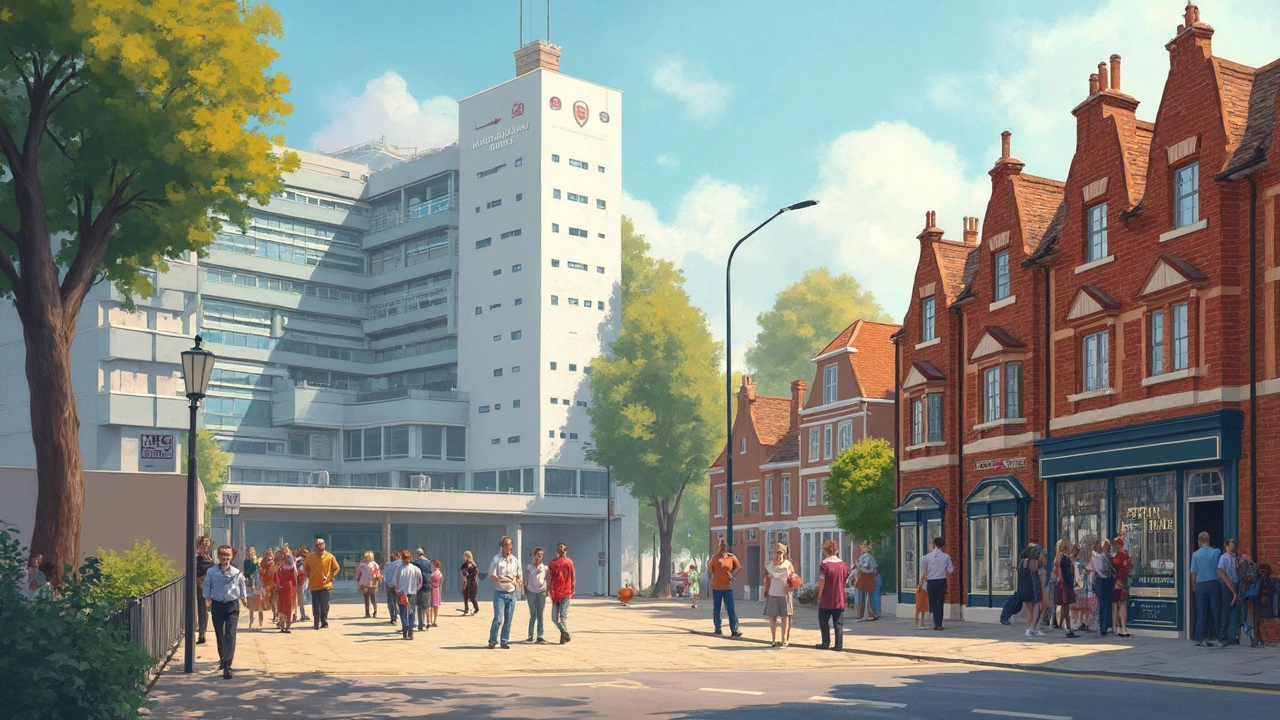
Choosing Between Type A and Type B: Smart Money, Practical Moves
So you’re eyeing a lot for that new dream project. Do you double down on safety and spend for type A, or do you run the numbers with type B? Here’s where things get interesting. Building codes rarely force you to pick one over the other—what decides is size, use, local rules, and, yes, budget. Municipalities often sweeten the deal for going with type A by allowing more floors or bigger footprints. For example, an office building with 10 stories in San Francisco would almost always require type A construction by law, while a two-story suburban convenience store? Type B is probably all you need.
Here's a sample checklist most developers use:
- Building size: Above a set square footage? Lean towards type A.
- Occupancy: Hospitals, schools, hotels—type A is standard.
- Location: Dense cities demand stronger, protected builds.
- Insurance: Type A cuts premiums long-term but costs more to build.
- Tenants: Tech firms, healthcare, or banks often require type A for their own liability or security rules.
- Exit strategies: Selling? A type A building often fetches a higher price in competitive markets.
Real estate firms have tracked that adding an hour to fire ratings may bump construction costs by 5-10%, but may slash insurance premiums nearly 20%—not bad if you plan to hold on to the property. And buyers notice: a 2024 JLL study found that 9 out of 10 investors rated protected (type A) construction as a “must-have” for buildings over five stories.
Don’t get boxed in by old habits, either. Technology makes blending the best of both possible. New modular panels, high-strength coatings, and hybrid systems let you dial up fire safety where you need it—like elevator shafts or stairwells—while keeping other parts cost-friendly and flexible.
What’s the big takeaway? The right construction choice pays off in safety, flexibility, and, yep, your bank account. Ask smart questions, and don’t fall for a one-size-fits-all answer. Building codes aren’t going away, but they’re now a lot more nuanced, giving smart developers room to get creative—without sacrificing what matters most: people and peace of mind.

